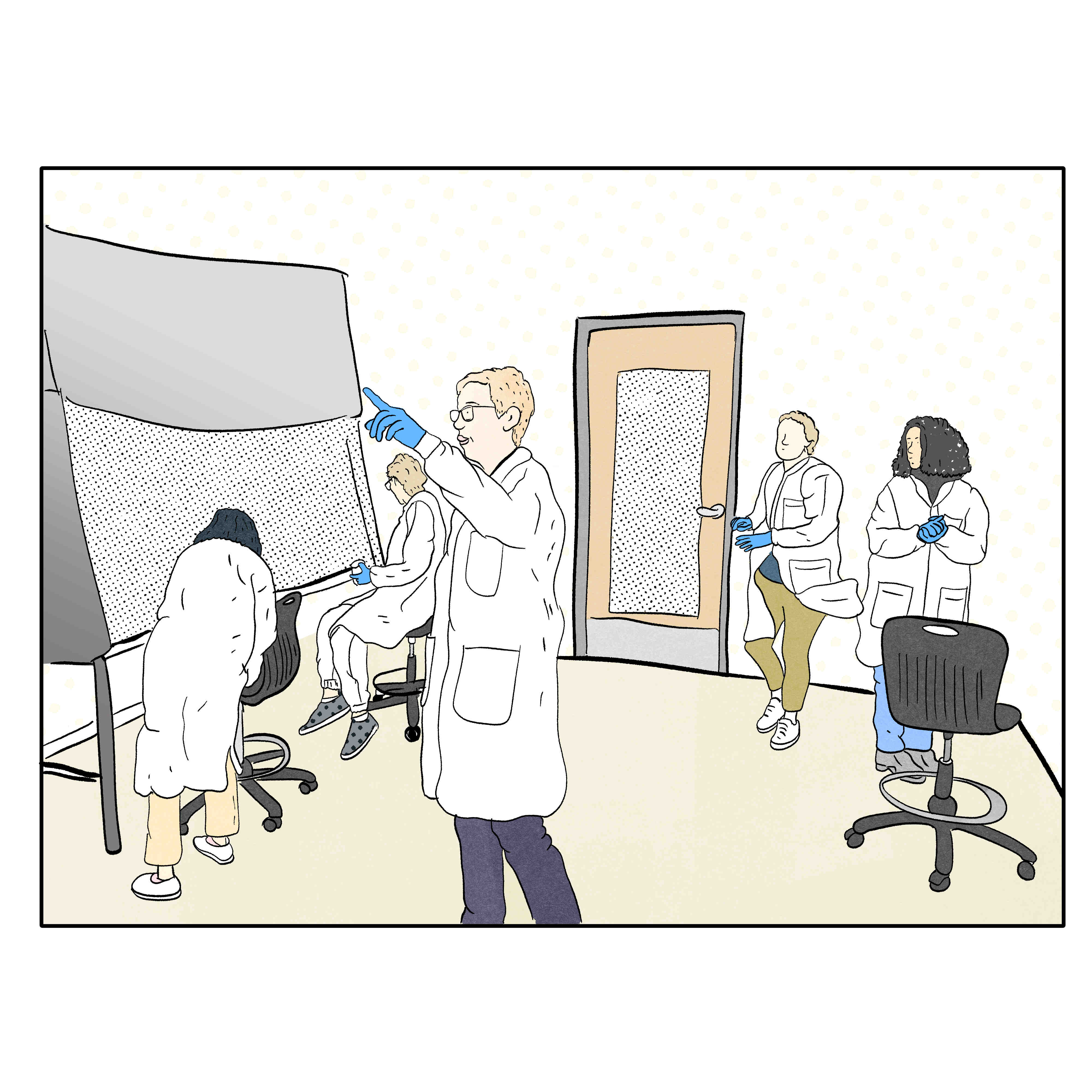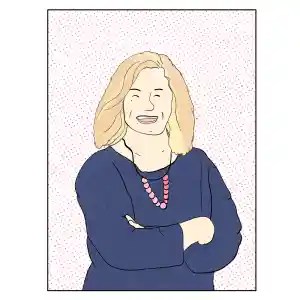Railroads built Roanoke, but Norfolk Southern slowly but surely abandoned the “Magic City” that it sparked. City leaders looking for new avenues decided to emphasize technology.
Tech Town is a four-part series looking at how the effort started and where it is now.
Read the other articles: Introduction, Part One.
Students with lab gear bustled about a Virginia Western Community College class one spring day.
The six, all in white lab coats, rotated among workstations. They transferred cultures from one container to another. They put them through a centrifuge. They studied them under a microscope and in an imaging machine. They used pipettes to transfer cultures. The two-person teams checked for consistent cell counts.
One team, Marisa Sigrist and Chanlee Luu, focused on maintaining and assessing cells’ health. Luu and the rest were dealing with the immortal HeLa cells. The name honors Henrietta Lacks — the Roanoke native who unwittingly provided them decades ago.
Luu and Sigrist wound up trying to figure out how they ended up with different cell counts after centrifuging. Class would end before they worked it out.
“I’m not really sure what was going on there,” Sigrist said later.
It didn’t ruin their lab experience. Virginia Western’s STEM Building mirrors real-world stuff. Mistakes happen.
“I want them to either learn that they like it or learn that they don’t, so it helps them kind of figure out their career path and they move on,” said their professor, Heather Lindberg. 
All students in class that day were there thanks to scholarships funded in part by Roanoke. The city’s $500,000 contribution helped Virginia Western create an associate degree in biotechnology, which started in fall 2023. The money also helped the school hire a second full-time professor. The scholarships paid for tuition, fees and books for seven students enrolled in the biotech research methods course and six students enrolled in protein applications, Lindberg said.
The money will support the program through spring 2026. After that the college will seek further support, spokeswoman Jamie Snead said.
A half-million dollars is a relatively small amount on Roanoke’s ledger. The city put $20 million into the Riverside Center for Research and Technology; the Fralin Biomedical Research Center at Virginia Tech Carilion stands as the centerpiece there. City officials are managing development at new lab space on Jefferson Street. Roanoke is contributing at least $1.9 million in matching funds for that 40,000-square-foot space through pandemic relief dollars.
The funding to Virginia Western might appear lighter. The intent is a key part of the bigger picture: home-growing a base of employees for a burgeoning life sciences sector.

“I feel like this can be such a selling point for our region in that, hey, you can come and tell us what you need, and we’ll develop training that meets that need,” said Amy White, Virginia Western’s STEM director. “So that’s one of our big assets is that we are pretty flexible, and relatively speaking, we can move quickly. We can’t move as quick as business sometimes. But we can move quicker than your traditional four-year institution where it takes, you know, four years to change your curriculum. We can be a little faster through our workforce programming.”
A big lesson from immortal cells
Sigrist and Luu said they learned a lot. A big lesson came via the HeLa cells’ origins. Lacks, born in Roanoke in 1920, died of ovarian cancer in 1951. She was treated at Baltimore’s Johns Hopkins Hospital. There, doctors biopsied her and sent a sample of her cancer cells to a nearby tissue lab, according to the hospital’s website. A lab doctor discovered that Lacks’ cells were unlike any he had studied. They not only survived outside the body but multiplied.
The so-called immortal HeLa cells have aided a multitude of researchers. Lacks, though, neither knew about nor consented to what the hospital had done. That ethical violation is at the heart of important discoveries that continue today.
Lacks’ living relatives reached a settlement last year with a Massachusetts-based technology company for its use of the regenerative cells — likely the first of many such settlements to come — according to the Baltimore Banner.
“It’s interesting about where these cells came from and it’s quite amazing how long the cell line has been able to last,” Sigrist, 20, said. “It’s a shame that this history has not been taught more than it should be, in my opinion.”
Luu, 29, has a bachelor’s degree in chemical engineering from the University of Virginia and a master’s degree in fine arts and creative writing from Hollins University. Luu, whose published poetry includes scientific themes, said she needs to make a trip to see Roanoke’s recently erected Henrietta Lacks statue. 
“So like, I think it will inspire something,” Luu said. “I just feel like I need to go see the statue and be present in that moment.”
On that school day, however, all efforts were on lab uses. The college has had a cluster of the widely distributed cells since about 2019, Lindberg said.
Luu, who grew up in Martinsville, said it’s part of a process for her to reconnect with science.
“I kind of burned out by the end of my undergrad degree,” she said. “Then I took a few years off to do my poetry and build up my portfolio, and also for mental health. And then, I guess, I kind of wanted to see for myself if I truly, like, enjoy science, outside of the stress. … I still want to use my chemical engineering degree and work in science, and I guess more so on the environmental side of things.”
Sigrist, who’s 19, scored a paid summer internship at Virginia Tech through the class and has since transferred to Radford University for its medical lab science program.
She said her experience in the Virginia Western class “just makes me want to learn more about the biotech industry and how, like, vaccines are produced and how … it is a key to our daily lives, whether it’s medicine or the food we eat or the fertilizer that we produce. … It just opened up a whole new world to me.”
There is plenty of potential in Roanoke for students who want to become professionals here, said Bradley Boettcher, the city’s innovation administrator. The new Jefferson Street lab building should be open by the end of 2025, he said, and companies connected to research going on there will need help. Clinical lab work at Carilion and at Fralin Biomedical is also a possibility, he said.
It’s such an early stage for a new associate degree, but things are falling together at the right time, said White, the STEM director at the college.
“I couldn’t have dreamed of a better partnership,” White said. “I feel like that is our region’s greatest strength … we can bring people together and we can work together.”




Comments are closed.